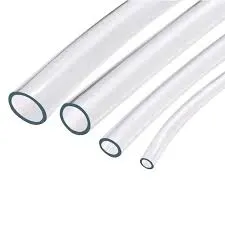નવેમ્બર . 24, 2024 01:14 Back to list
Efficient PVC Pipe Systems for Effective Drip Irrigation Solutions in Gardening and Agriculture
Drip Irrigation Using PVC Pipe An Efficient Solution for Modern Agriculture
Drip irrigation has revolutionized the way we approach agricultural practices. This method involves the careful application of water directly to the plant's root zone through a network of pipes, valves, and emitters. Among the various materials that can be used for constructing a drip irrigation system, PVC (polyvinyl chloride) pipes stand out for their durability, cost-effectiveness, and ease of installation. This article explores the benefits and steps involved in setting up a drip irrigation system using PVC pipe.
The Benefits of Drip Irrigation
1. Water Efficiency Traditional irrigation methods often result in water wastage due to evaporation and runoff. In contrast, drip irrigation delivers water directly to the plant roots in a controlled manner, reducing water loss and promoting efficient use. This is especially crucial in regions facing water scarcity.
2. Reduced Weed Growth By applying water only to the root zones of the plants, drip irrigation minimizes moisture in the surrounding soil. This reduced moisture level discourages weed growth, allowing crops to thrive without competition for resources.
3. Improved Crop Yield With a steady supply of water and nutrients, plants can grow more vigorously. Drip irrigation systems enhance soil moisture levels consistently, which can lead to increased crop yields and better quality produce.
4. Fertilizer Efficiency Drip irrigation can be coupled with fertigation—applying fertilizers through the irrigation system. This allows for precise application directly to the plant roots, improving nutrient uptake and reducing fertilizer wastage.
5. Labor Savings Once installed, drip irrigation systems require less manual labor compared to traditional irrigation methods. The automated nature of the system also allows farmers to manage multiple crops efficiently.
Setting Up a Drip Irrigation System with PVC Pipe
Setting up a drip irrigation system using PVC pipes involves a few simple steps
Step 1 Planning Your System
Before beginning installation, it is crucial to plan the layout of the irrigation system. Determine the area to be irrigated, the types of plants being grown, and their specific water requirements. A detailed plan will allow for efficient design and installation.
Step 2 Gathering Materials
drip irrigation using pvc pipe

The primary materials required for a PVC drip irrigation system include - PVC pipes of various diameters - PVC fittings (elbows, tees, connectors) - Drippers or emitters - A filter to remove any debris from the water source - A pressure regulator to maintain optimal water pressure - Optional a timer for automated irrigation
Step 3 Installing the Mainline
Start by installing the main PVC pipe that will deliver water from the source to the various sections of your irrigation system. This mainline should be positioned minimally at a slope to facilitate water flow.
Step 4 Adding Laterals
From the mainline, connect smaller lateral lines that will distribute water to each row or section of plants. Cut the PVC pipes to the desired lengths and use PVC fittings to connect them, ensuring all joints are secure.
Step 5 Installing Emitters
Once the lateral lines are set, install emitters at appropriate intervals along the lines. The spacing will depend on the type of crops grown and their specific irrigation needs. Emitters can be pressure-compensating to ensure uniform water distribution even at varying elevations.
Step 6 Testing the System
After installation, it's essential to test the drip irrigation system to ensure there are no leaks and that all emitters are functioning correctly. Observe the system for a few days to fine-tune the flow rates if necessary.
Step 7 Maintenance
Regular maintenance is key to the longevity and efficiency of your drip irrigation system. This includes checking for clogs in the emitters, cleaning filters, and ensuring all components are functioning as intended.
Conclusion
Drip irrigation using PVC pipe presents an excellent opportunity for modern farmers aiming to enhance water efficiency and crop productivity. This method not only conserves water but also reduces labor costs and improves the quality of produce. By investing time in the proper setup and maintenance of a drip irrigation system, growers can enjoy the benefits of this sustainable agricultural practice for years to come.
-
Durable PP Rigid Sheet: Lightweight, Chemical Resistant Solutions
NewsAug.21,2025
-
PVC Grey Sheet for Extraction: Chemical Resistant & Durable
NewsAug.19,2025
-
Durable PVC Pipe Fittings for Plumbing & Irrigation Needs
NewsAug.18,2025
-
HDPE Steel Belt Reinforced Spiral Corrugated Pipe | High Strength
NewsAug.17,2025
-
HDPE Pipe Fittings: Durable, Leak-Proof Solutions
NewsAug.16,2025
-
Premium CPVC Sheet: High-Temp & Chemical Resistant Solutions
NewsAug.15,2025

